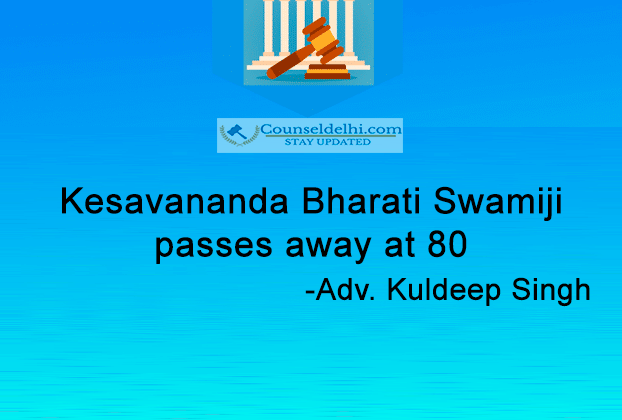Kesavananda Bharati Swamiji of Edneer Mutt passes away at 80, whose Supreme Court case was the genesis of ‘basic structure’,
He was the petitioner in the landmark judgment of the Supreme Court on fundamental rights. He had challenged the law after the legislation regarding land reforms had threatened to strip his mutt of its property which was the only source of income for the ashram.
Bharati had filed a case on March 21, 1970, challenging the Kerala Land Reforms (Amendment) Act, 1969, and the three Constitutional amendments — 24, 25, and 29.
Kesavananda Bharati, the seer who had initiated the constitutional case before the Supreme Court (SC) that had led to the birth of the legal doctrine of ‘basic structure’, passed away on Sunday morning in his ashram at Edneer in north Kerala’s Kasaragod district at age of 80.
Bharati had filed the case on March 21, 1970, challenging the Kerala Land Reforms (Amendment) Act, 1969 and the three Constitutional amendments — 24, 25, and 29 — on the ground that they violated his fundamental right to practice and propagate religion (Article 25); freedom of religious denomination, including managing and administering its property, (Article 26); and right to property (Article 31).
He had challenged the law after the legislation regarding land reforms had threatened to strip his mutt of its property which was the only source of income for the ashram.
Acclaimed lawyer Nani Palkhivala had appeared for Bharati before a 13- judge SC bench.
It was the only time a bench of 13 judges, which was the full strength of the apex court at that point in time, had set to decide a case. It was the longest heard case before the apex court, as the hearing went on for 69 days from October 31, 1972, to March 23, 1973.
The SC ruling on the 24th amendment was crucial as far as Constitution and Parliament’s powers were concerned.
The 24th amendment empowered that Parliament can amend any part of the Constitution. The amendment, which was brought about in 1971, was done to overcome an earlier judgment of the SC in the Golaknath v. State of Punjab case. In the Golaknath case, the SC had held that Parliament cannot amend the Constitution in a manner that it takes away or abridges the fundamental rights of the Constitution.
That ruling was based on the interpretation of Articles 13 and 368 of the Constitution.
Article 13 states that Parliament cannot make any law that violates fundamental rights guaranteed under Part III of the Constitution. Article 368 empowers Parliament to make amendments to the constitution.
The issue before the court was whether the word “law” under Article 13 would include a constitutional amendment under Article 368. In the Golaknath judgment, it was held that an amendment under Article 368 was “law” within the ambit of the definition of Article 13. It had ruled that Parliament does not have the power to amend Part III of the Constitution.
The 24th amendment had provided that the bar under Article 13 would not apply to any constitutional amendment made under Article 368.
As a result, Parliament can amend any part of the Constitution, including fundamental rights.
The Bharati judgement by a majority of 7:6 had upheld this power. But it came with a powerful rider – that such amendments should not alter the ‘basic structure’ of the Constitution. However, the apex court did not give an exhaustive list of what would constitute ‘basic structure’ of the Constitution.
The interpretation was left open ended and has been time and again used to strike down laws that the SC felt distorted the Constitution.




![Landmark Judgement Lalita Kumari v. Govt. of U.P [W.P.(Crl) No; 68/2008]](https://counseldelhi.com/wp-content/uploads/2020/09/landmark-judgement-lalita-kumari-v-govt-of-u-p-150x150.png)